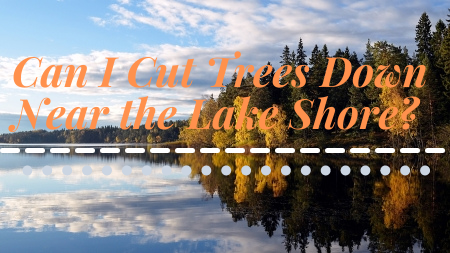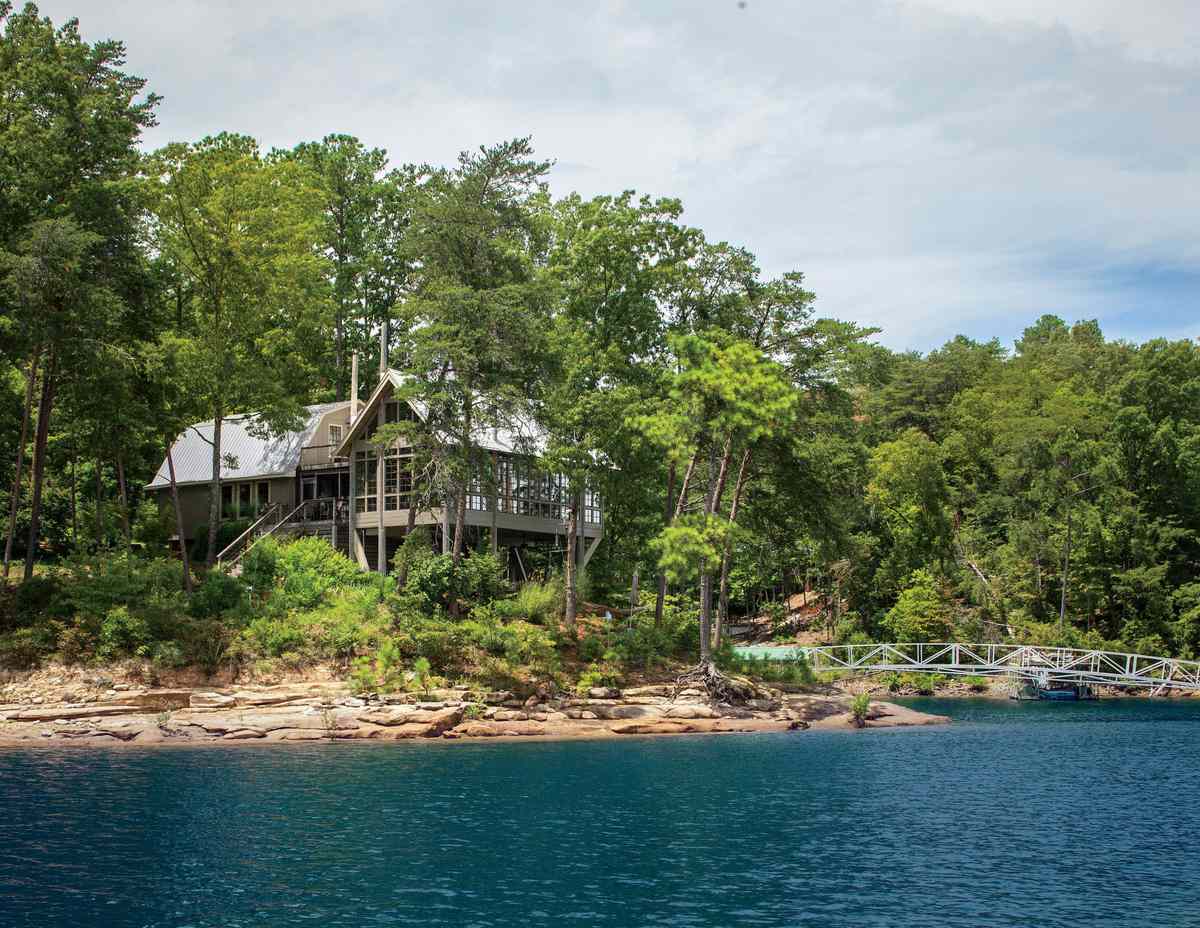
Most new homeowners seem to want to cut trees down between the house and the lake when they first buy a property. I STRONGLY urge you live with what you have for a full year first. I can’t count the number of homeowners that came back to me and said “I wish I had left the trees alone. Now I have no mature trees to provide shade, privacy and protection.”

Be aware of fines:
Going around the law in your area can be very costly. A Connecticut homeowner found that out the hard way. After cutting 9 shoreline trees down (without getting a permit) to open his view, the owner was fined $125,000. How did they find out he cut them? Satellite photos! And you won’t be pleasing your neighbors at all, they will most likely turn you in.
What can you do?
First, it’s important to learn about the law from your specific town. Every state, town and lake community have individual laws and regulations regarding what you can and can’t do along the shoreline at your lakefront property. Keep in mind, a permit is almost ALWAYS required to do anything around the lake.
Below is a summary of Maine’s “Shoreline Zoning Act”. Why am I only showing Maine? Because I believe it it’s a good general guideline for all lakefront property owners to follow (assuming it meats their own state laws).
In the first 100 feet (buffer strip) from the normal high-water line, no clear-cut openings (openings in the forest canopy greater than 250 square feet) are permitted, although 40% of the volume of trees four inches or more in diameter, measured at 4 ½ feet above ground level, can be removed in any ten-year period.

The cutting must be done such that a well-distributed stand of trees and other vegetation remains. This “well-distributed stand of trees and other vegetation” is determined by a point system. The point system assigns values to trees down to 2 inches in diameter and requires a certain total value of trees be maintained in any 25-foot by 25-foot square area within the 100-foot buffer strip.
Vegetation less than 3 feet tall must be maintained within the buffer strip. Pruning of tree branches on the bottom 1/3 of trees is permitted. Beyond the 100-foot buffer (up to 250 feet) vegetative cutting limitations are less restrictive. In this area cleared openings are permitted provided that such clearings do not exceed 25% of the lot area, or 10,000 square feet, whichever is greater.
In total, however, no more than 40 % of the volume of trees can be removed in any 10-year period from the shoreland zone.
Resource Protection Zoning
Any cutting of vegetation is prohibited in areas zoned for Resource Protection for a distance of 75 feet from the normal high-water line, except to remove safety hazards. Contact your CEO to find out if your land is zoned for Resource Protection.
Hazard Trees
Any tree that does not meet the above criteria for cutting may be cut if it is deemed a hazard tree by your CEO, and other trees are planted to replace it. A hazard tree is a tree that is dead, diseased, or dying, and has a target (it could damage people or property that cannot be moved out of the way).
Other states:
For some guidance on what the regulations may be in your state, visit “Tree removal regulations by state”
Posted by Scott Freerksen “The Lake Guy”
